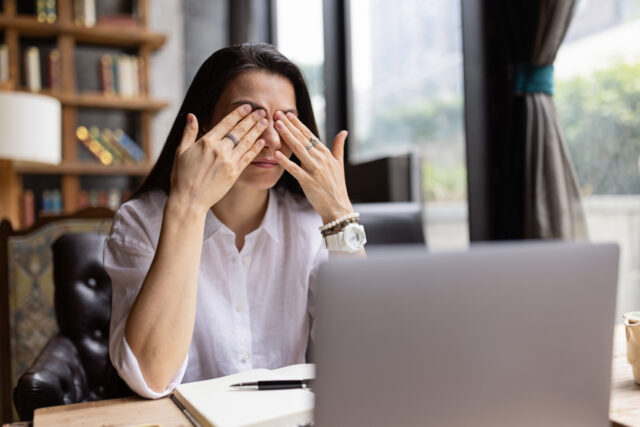
According to the Vision Council, at least 60% of American men and 65 % of American women reported symptoms of digital eye strain. An article recently published in Optometry Times argues that optometrists and other eye care professionals should take a more preventive holistic approach to treating digital eye strain. While factors like screen time and blue light exposure are important, this article highlights how lifestyle choices can significantly impact eye health. Here are some key takeaways for optometrists:
- Look beyond the device: Look beyond the screen and consider how hydration, stress, sleep, posture, nutrition, and medications might be affecting patients’ eyes.
- Ask about lifestyle habits: Incorporate questions about these factors into your patient intake process.
- Recommend preventative measures: In addition to traditional treatments, advise patients on how to improve their overall health habits to reduce eye strain.
The article details how each lifestyle factor can influence eye health:
- Hydration: Dehydration can lead to dry eyes, blurred vision, and fatigue.
- Stress: Chronic stress increases cortisol levels, contributing to dry eyes, inflammation, and poor visual function.
- Sleep: Insufficient sleep can impair attention, visual function, and the body’s ability to repair itself.
- Workplace environment: Poor lighting, glare, and screen positioning can all contribute to eye strain.
- Posture: Slouching and poor posture can strain the neck and back, mimicking or causing eye issues.
- Nutrition: A balanced diet rich in antioxidants and omega-3 fatty acids can promote eye health.
- Medications: Certain medications can have side effects that impact vision.
By considering these factors in addition to screen time, eye care professionals can provide more comprehensive treatment plans and preventative advice for patients experiencing digital eye strain.
SOURCES: The Vision Council, Optometry Times




